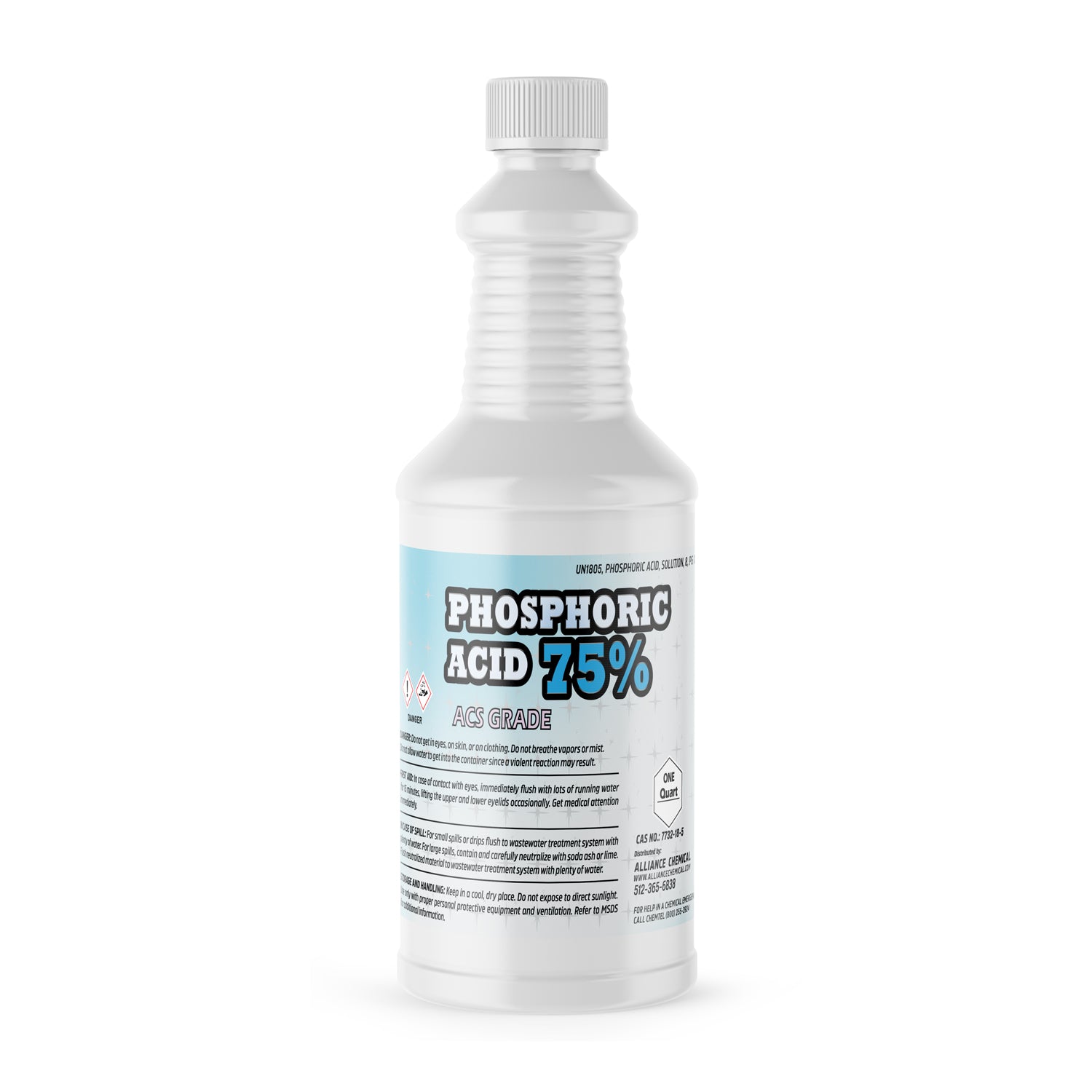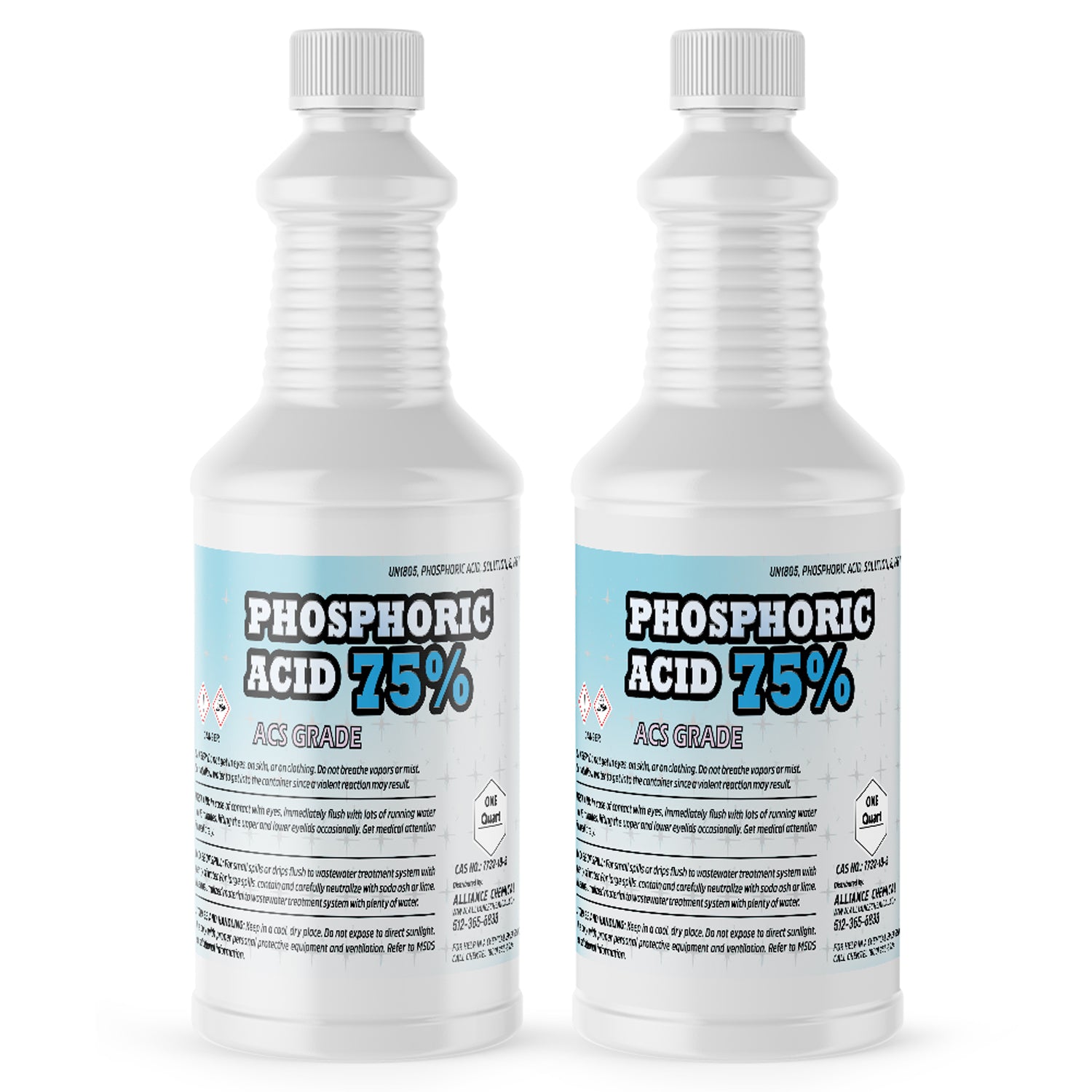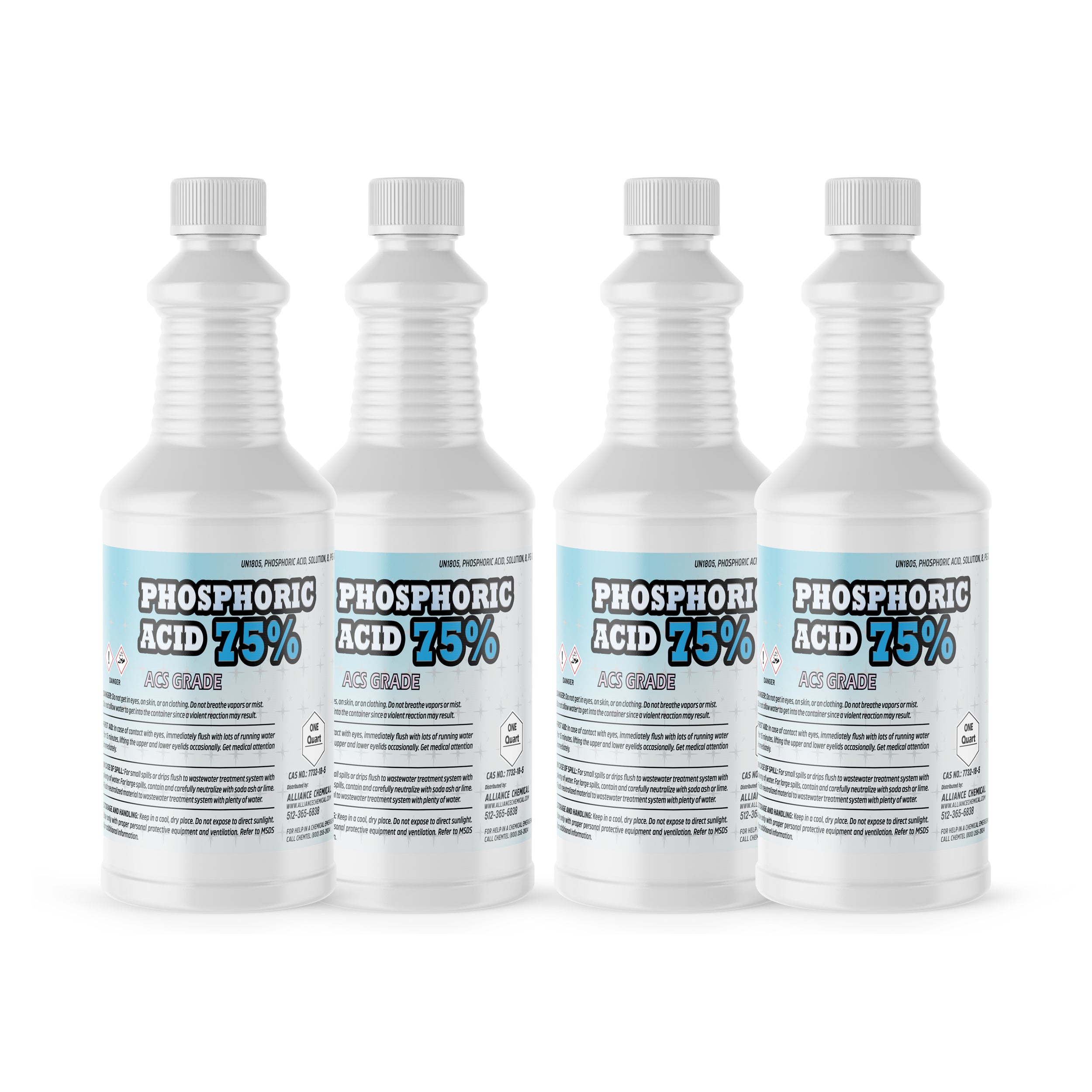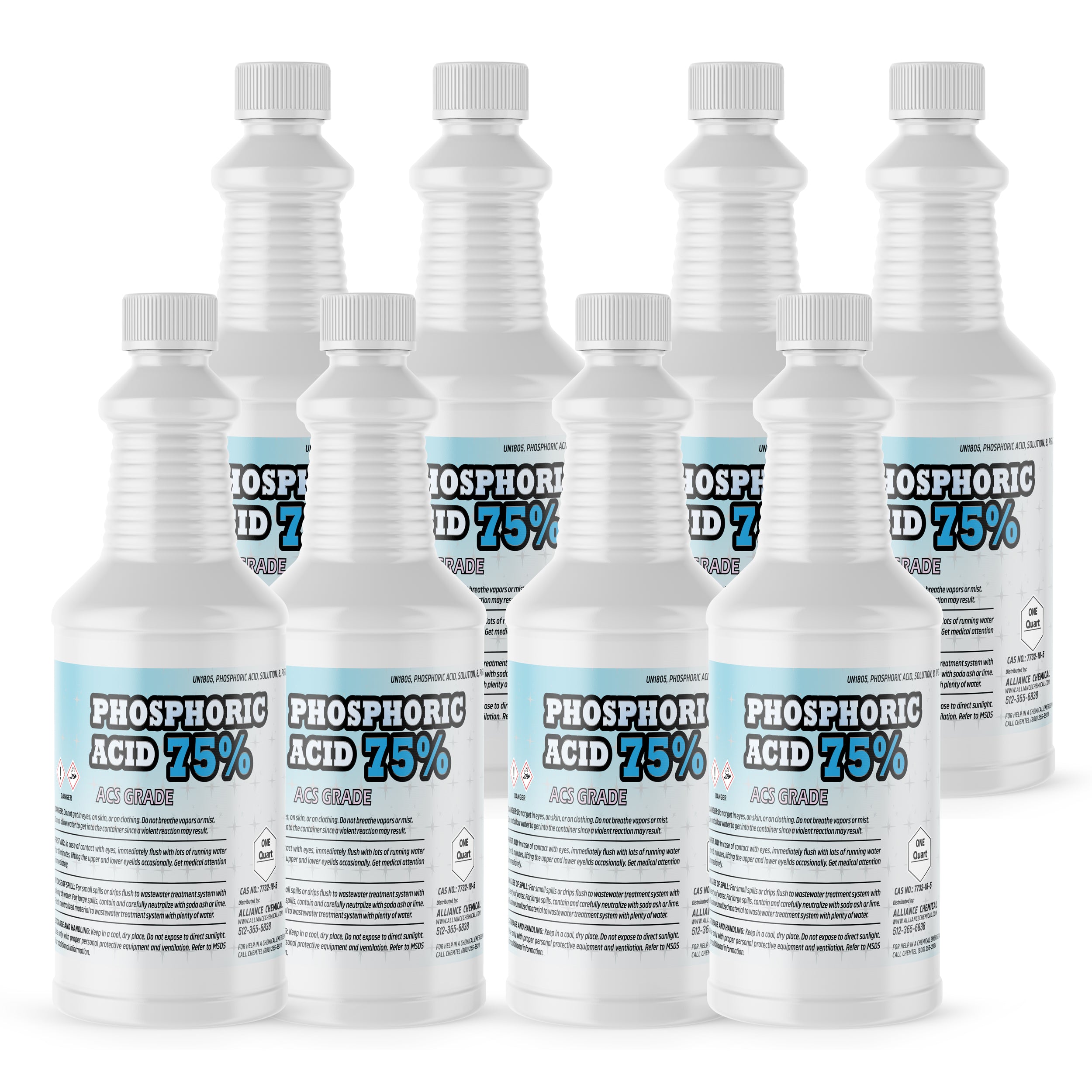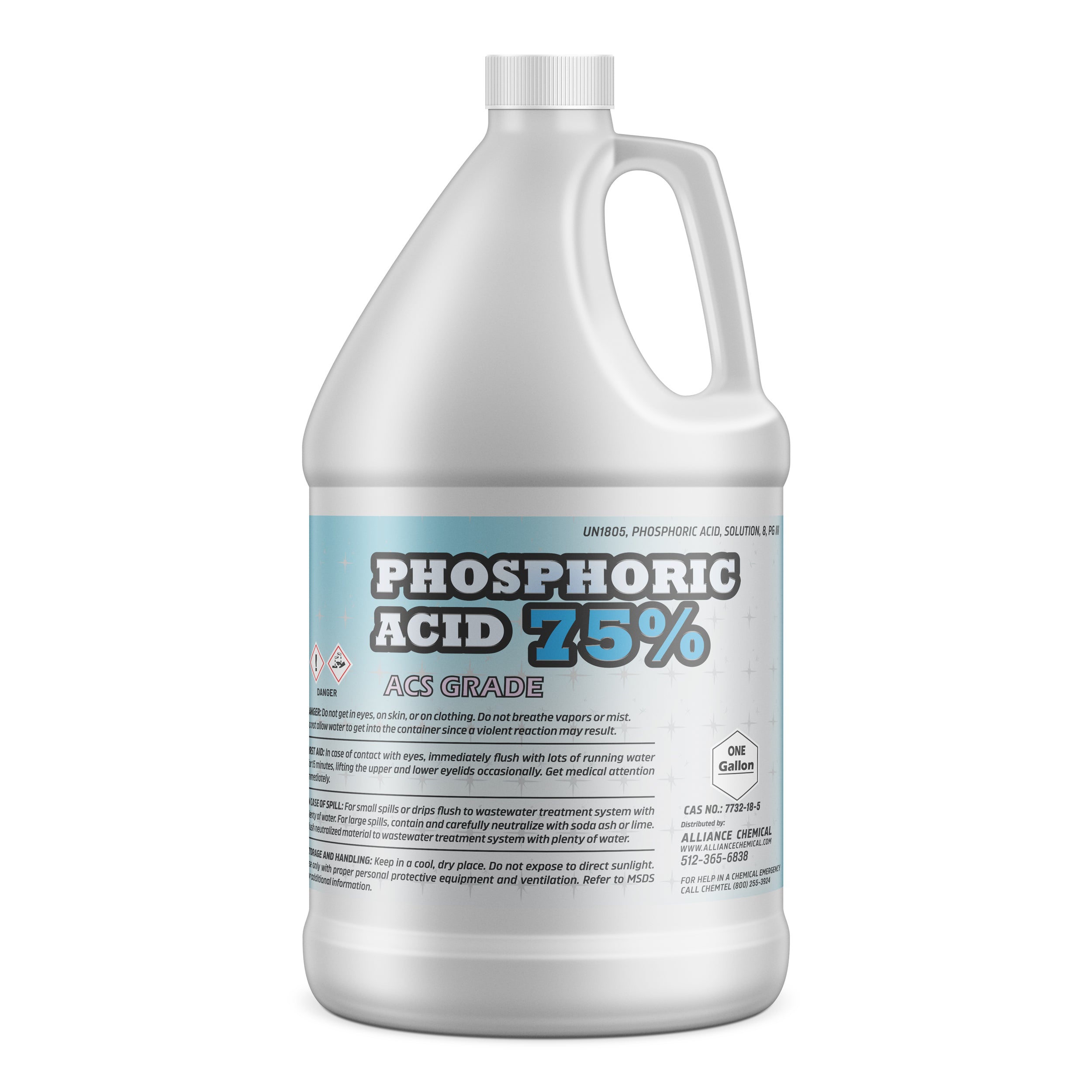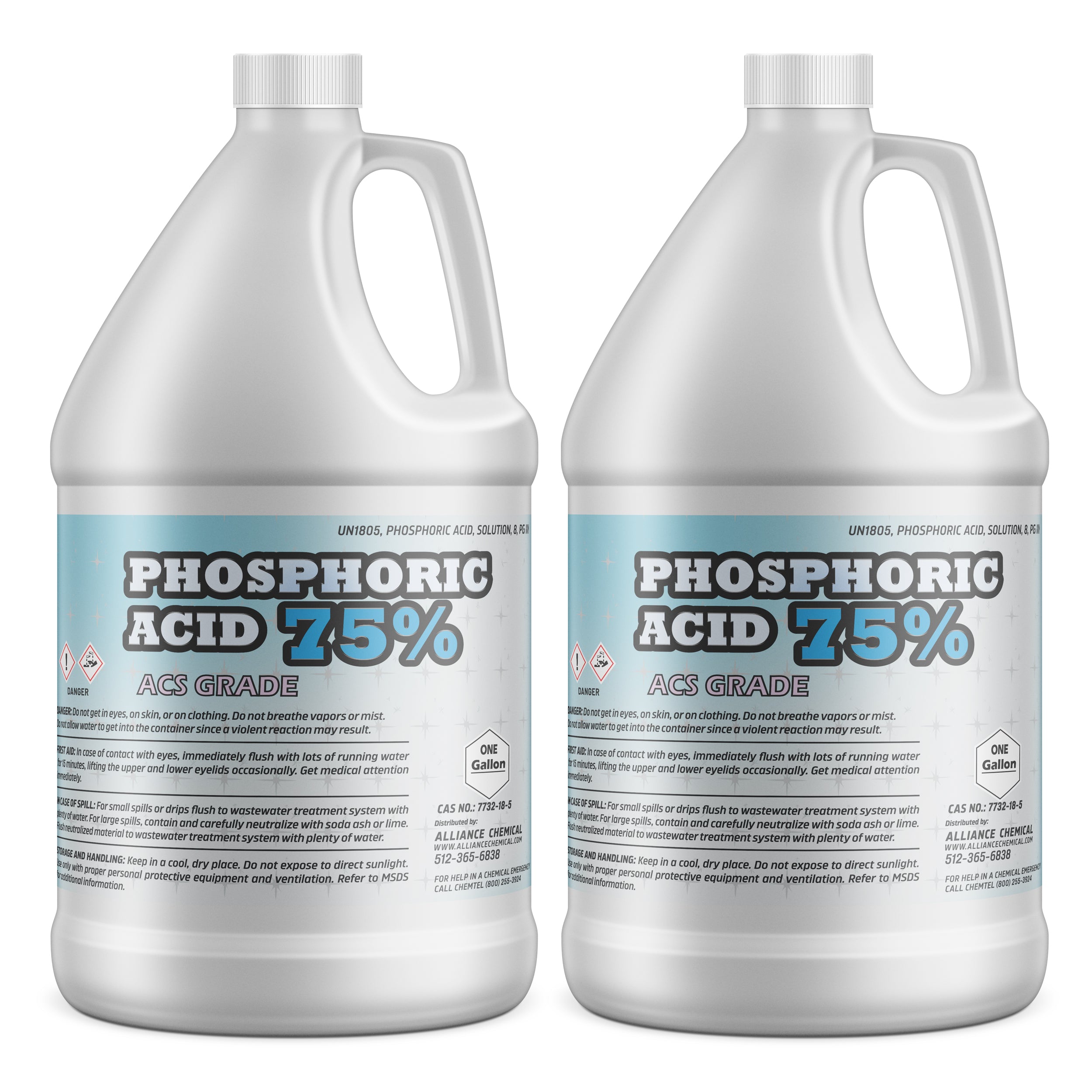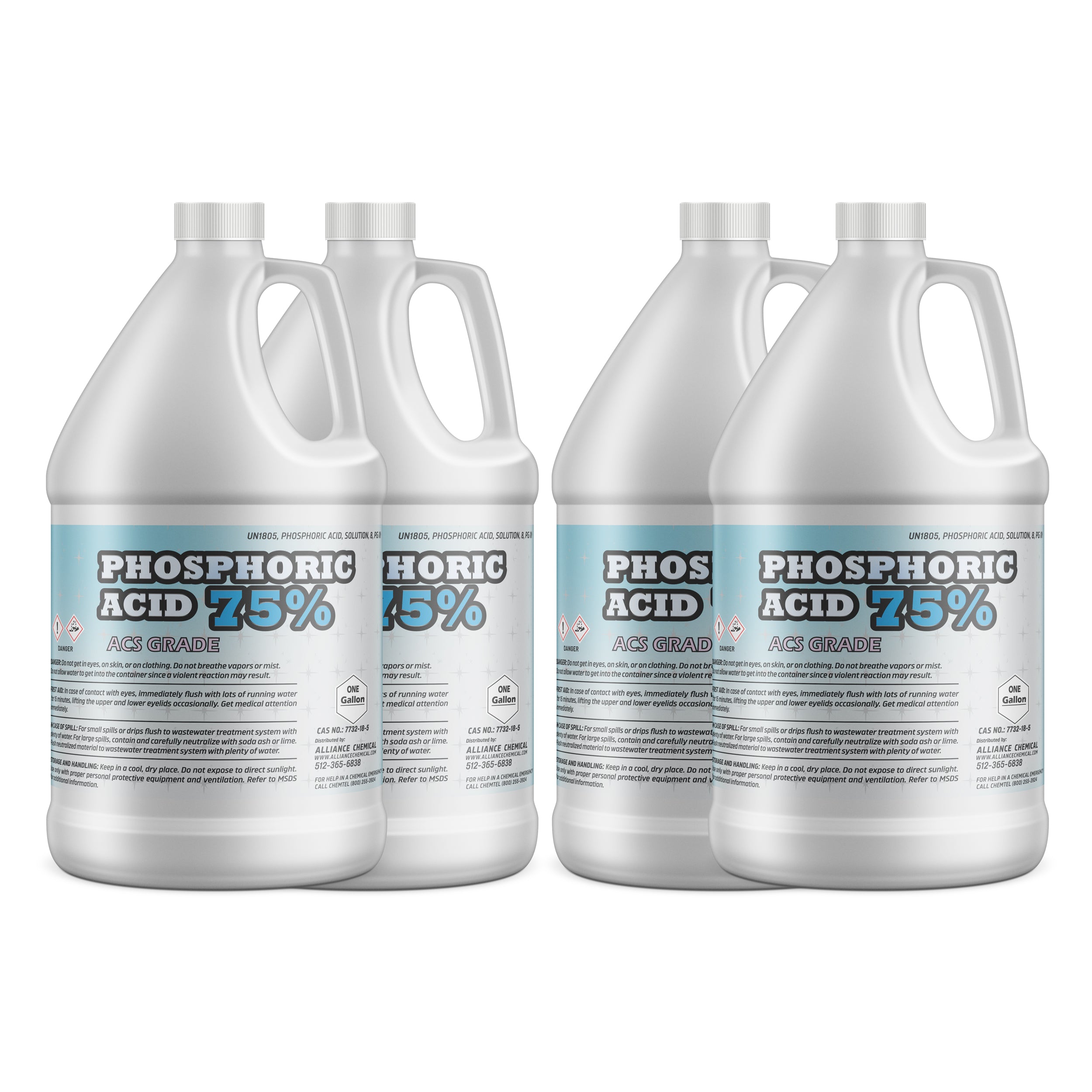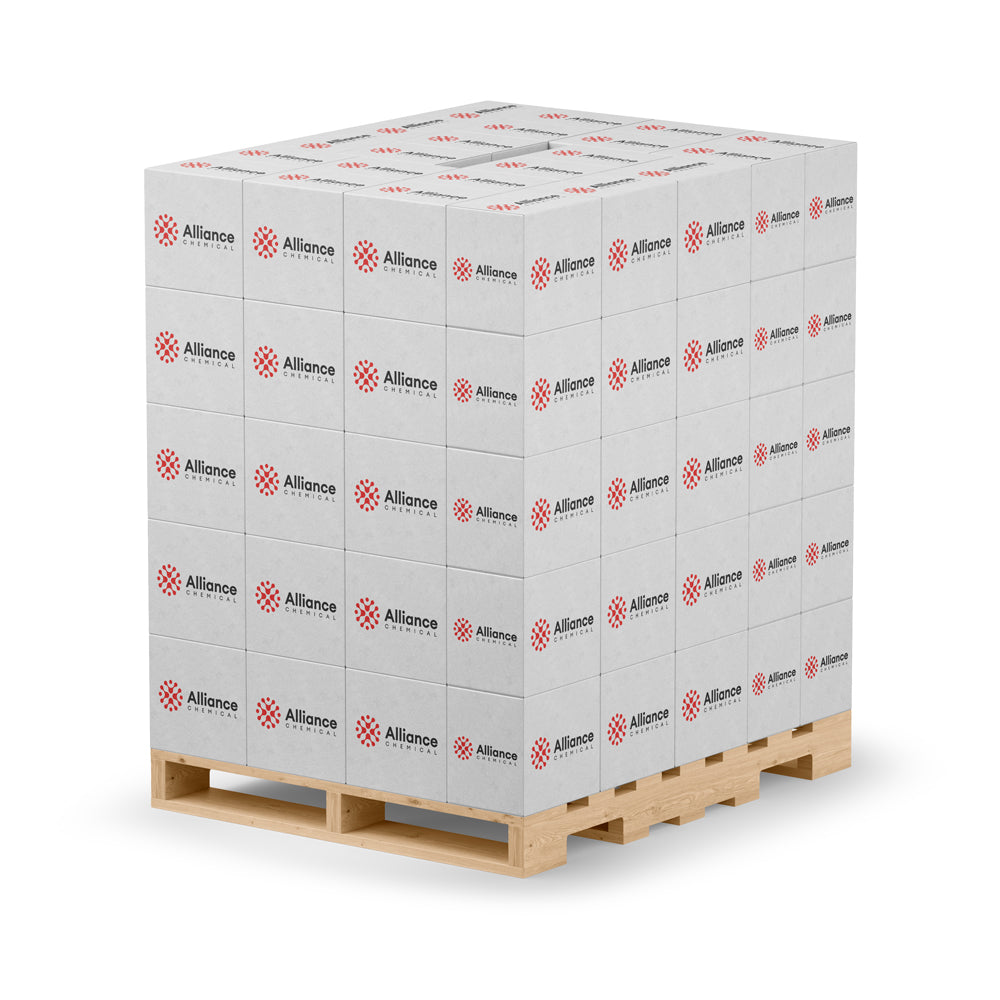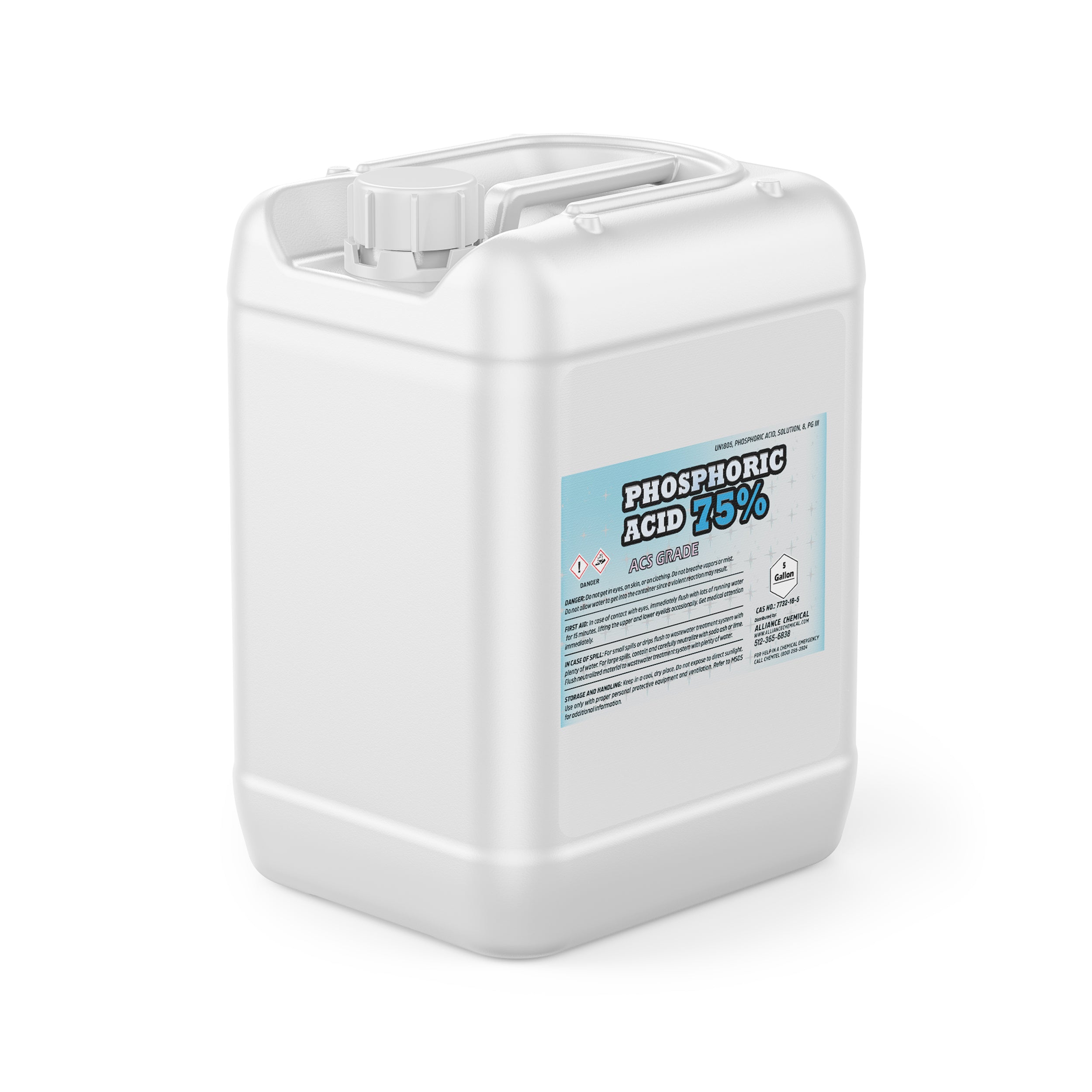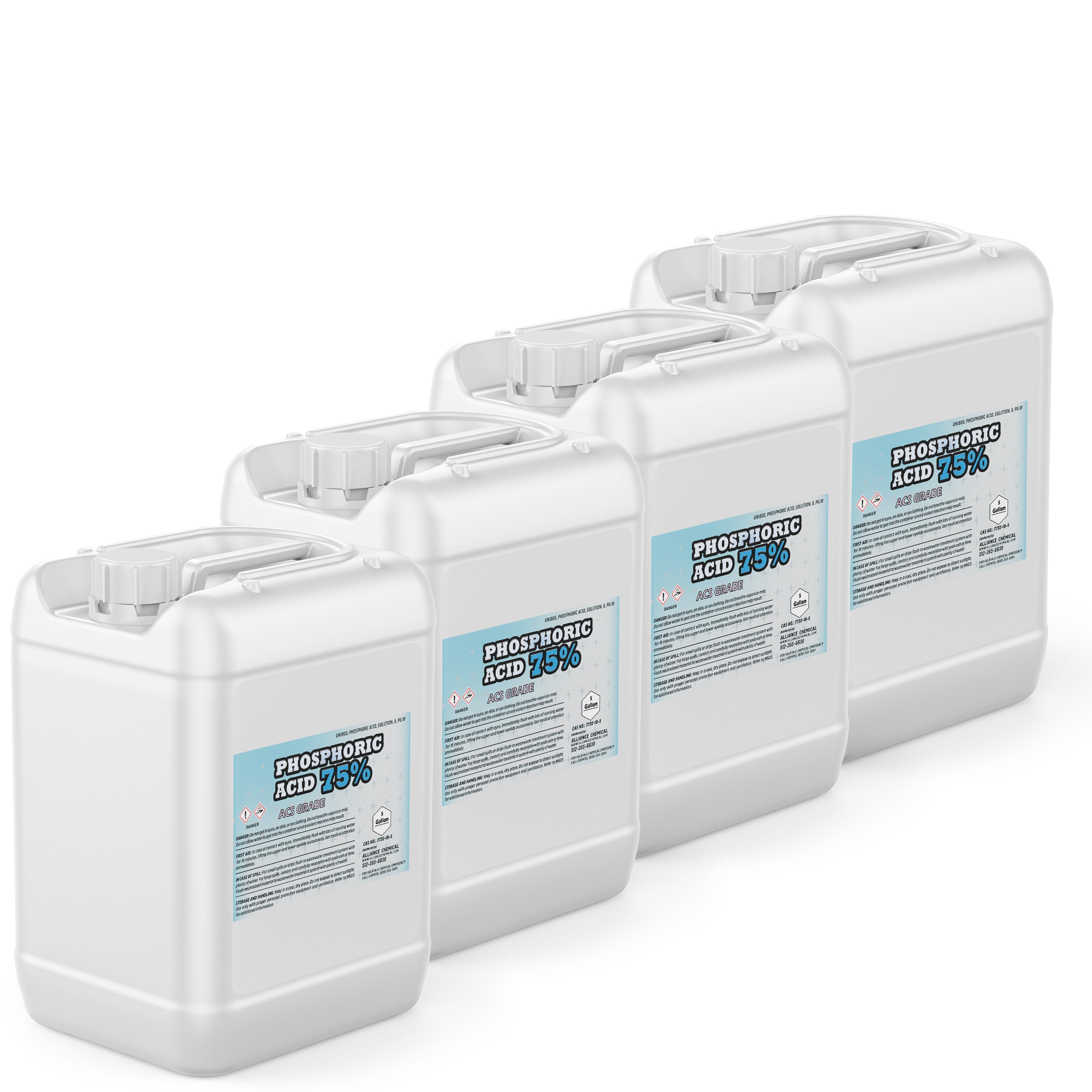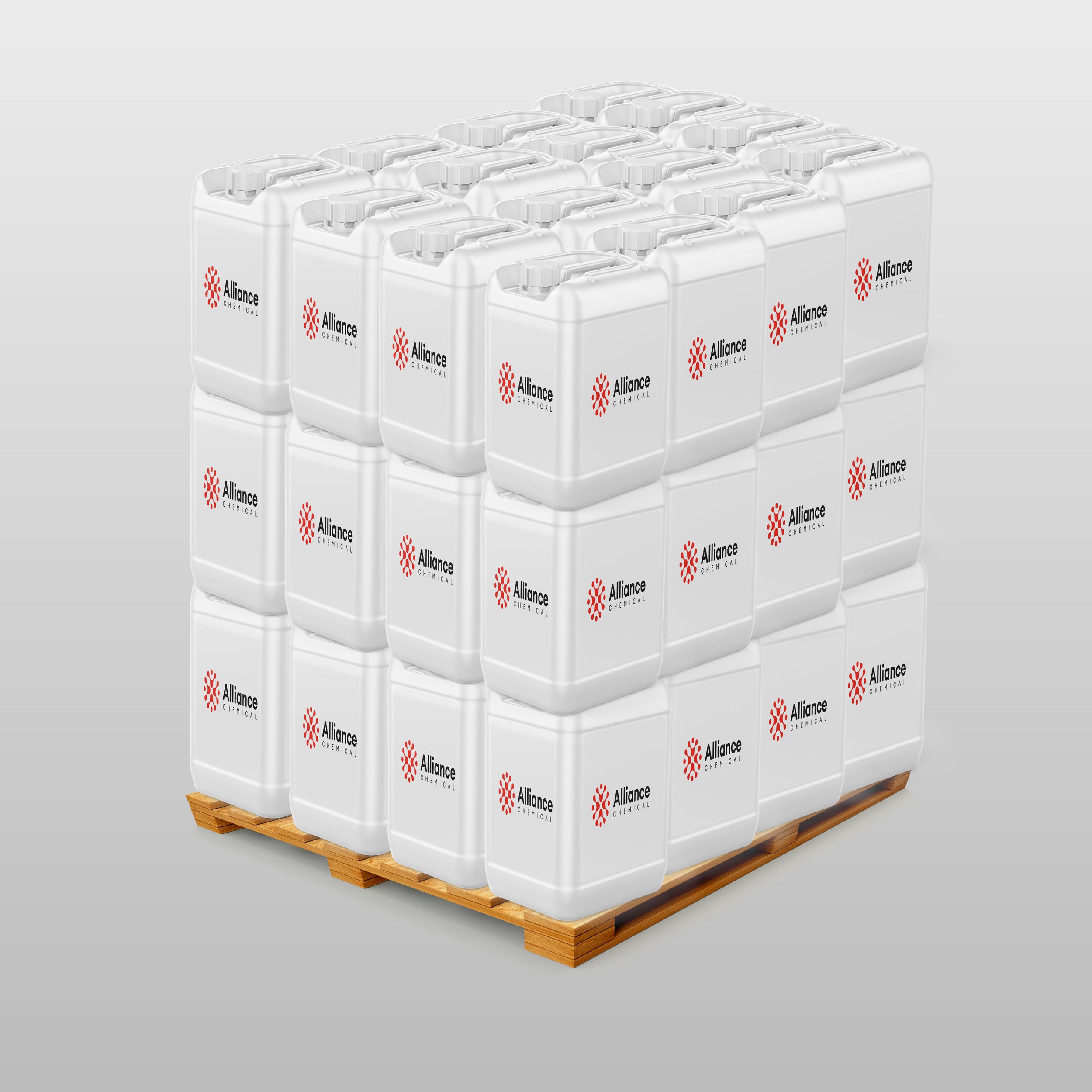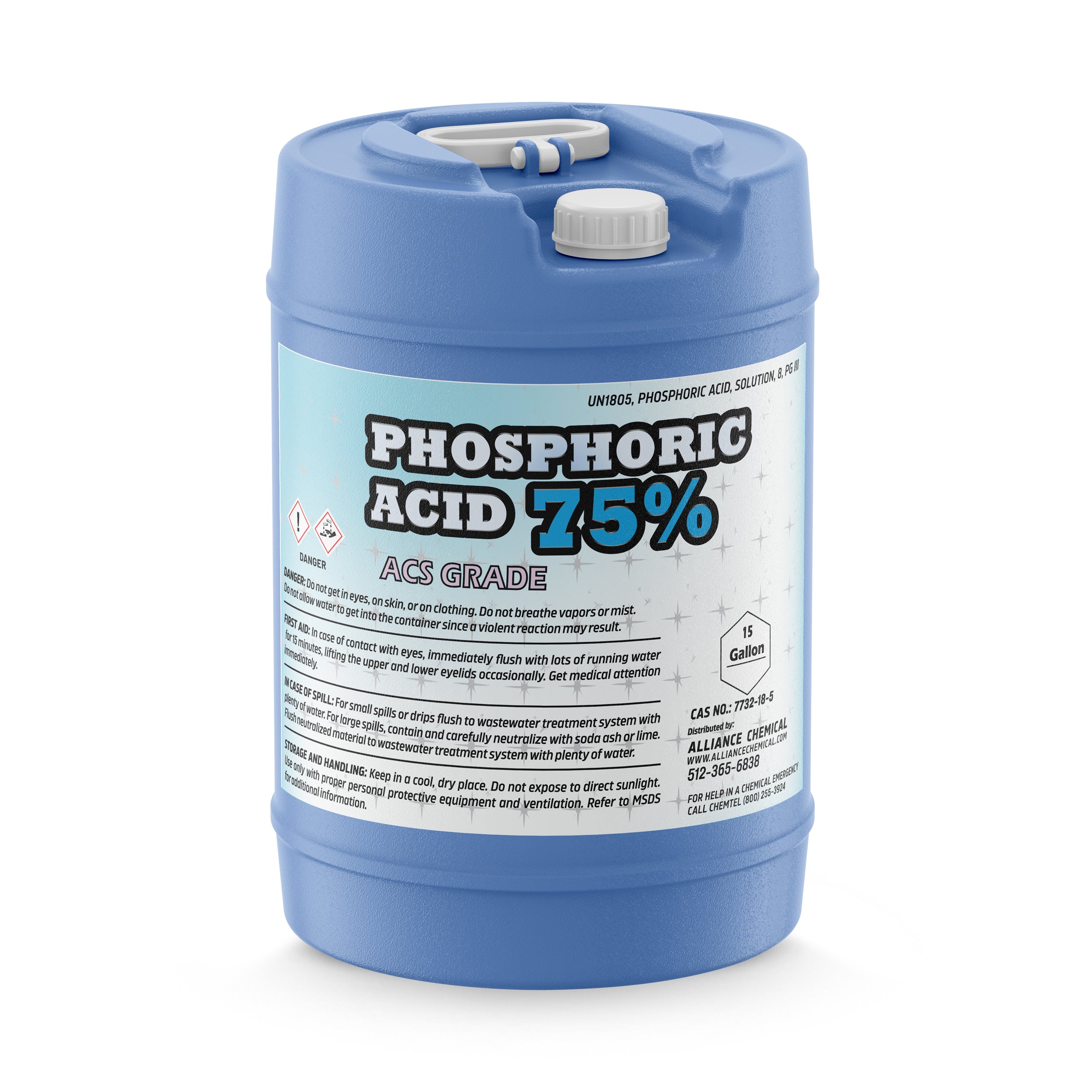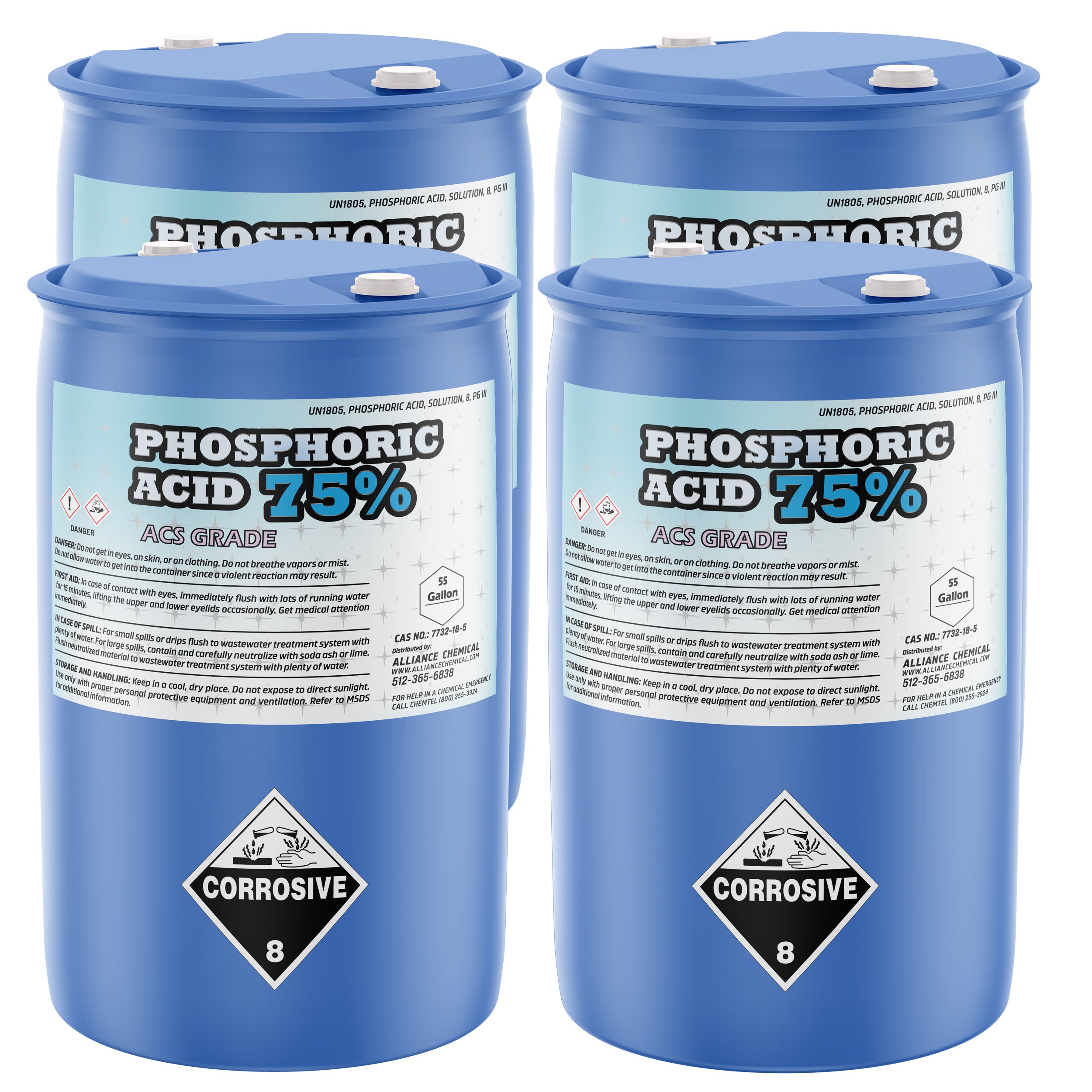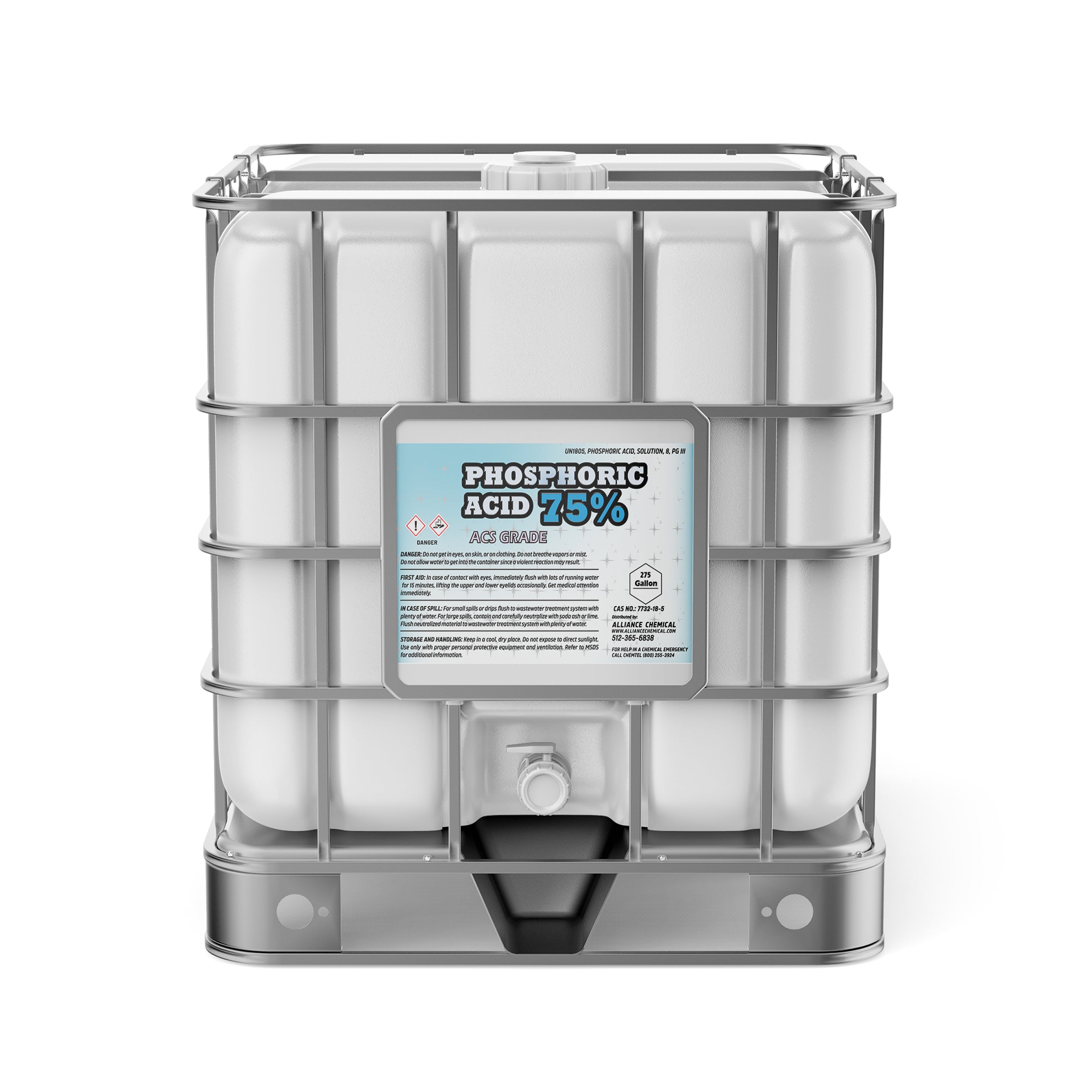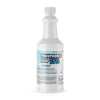Phosphoric Acid 75 ACS Grade
Category : Acids
$26.10
$190.00
86%
Off
Unit price
Quantity
Ask a question
Product Overview
Phosphoric Acid 75 ACS Grade is a clear, colorless liquid of exceptional purity designed for rigorous industrial and laboratory use. This triprotic acid (H₃PO₄) provides precise acidity control and reliable reagent performance for pH adjustment, buffer systems, and chemical synthesis. The product is supplied as a solution form with typical assay values ranging from 75.0 to 76.5 wt% (min 75, max 76.5; typical 75.8) as determined by standardized titration with NaOH. Its low color (APHA ≤ 10, typical 6) and low residue after ignition (≤ 0.1%, typical 0.04) support applications demanding high purity and consistent quality. The specific gravity at 20°C (1.57–1.58; typical 1.575) and density at 25°C (1.685 g/mL) enable precise formulation in process streams, while it remains fully miscible with water and compatible with HDPE or glass storage containers. The product conforms to ACS Reagent Grade and USP-NF Monograph standards, reinforcing its suitability for analytical and manufacturing workflows that require strict quality control.
Key Properties
- Appearance: Clear, colorless liquid
- Chemical Formula: H₃PO₄
- Molecular Weight: 98.00 g/mol
- Boiling Point: 158 °C
- Specific Gravity (20°C): 1.57–1.58 (typical 1.575)
- Residue After Ignition: ≤ 0.1% (typical 0.04%)
- Chloride: ≤ 0.5 ppm (typical 0.2 ppm)
- Nitrate (NO₃⁻): ≤ 0.5 ppm (typical 0.2 ppm)
- Ammonium (NH₄⁺): ≤ 0.5 ppm (typical 0.1 ppm)
- Sulfate (SO₄²⁻): ≤ 0.5 ppm (typical 0.2 ppm)
- Phosphate (PO₄³⁻): ≤ 1,000 ppm (typical 200 ppm)
- Arsenic (As): ≤ 0.01 ppm (typical 0.003 ppm)
- Heavy Metals (as Pb): ≤ 0.5 ppm (typical 0.05 ppm)
- Iron (Fe): ≤ 0.2 ppm (typical 0.05 ppm)
- Copper (Cu): ≤ 0.5 ppm (typical 0.05 ppm)
- Manganese (Mn): ≤ 0.5 ppm (typical 0.05 ppm)
- Nickel (Ni): ≤ 0.5 ppm (typical 0.05 ppm)
- Chromium (Cr): ≤ 0.5 ppm (typical 0.05 ppm)
- Sodium (Na): ≤ 0.5 ppm (typical 0.05 ppm)
Common Applications
- Application Category: pH Adjustment – Water Treatment: Used to adjust and stabilize pH levels in municipal and industrial water treatment processes, enabling control of corrosion, scale formation, and chemical dosing efficiency.
- Fertilizer Production: Serves as a key raw material for phosphate fertilizer synthesis, enabling phosphate esterification and acidulation steps required for fertilizer formulations.
- Food Additive: Acidity regulator in processed foods; provides controlled acidity to enhance flavor and preservation while meeting purity requirements.
- Chemical Reagent: Acts as a reagent in synthesis workflows, including buffer preparation, catalyst preparation, and phosphate-based reaction media.
- Cleaning Agent: Integrated into industrial cleaning formulations for metal surfaces, aiding descaling and corrosion-inhibition strategies in manufacturing environments.
- Analytical Chemistry: Used as a standard reagent in titration methods and sample preparation where controlled acidity and low contaminant profiles are required.
Safety Precautions
Handle with appropriate PPE including chemical splash goggles, acid-resistant gloves, and a lab coat or apron. Store in a cool, dry, well-ventilated area away from incompatible materials, using HDPE or glass containers to minimize container interaction. Avoid contact with strong bases and oxidizing agents, and maintain the container in a tightly closed state to prevent moisture uptake and contamination. Follow standard operating procedures for handling corrosive acids and ensure eyewash and safety showers are readily accessible in the work area.
Emergency procedures: In case of skin or eye contact, rinse immediately with copious water for at least 15 minutes and seek medical attention. If inhaled, move to fresh air and seek medical evaluation. If ingested, do not induce vomiting; rinse mouth and seek medical care. For spills, evacuate area, ventilate, and neutralize with an appropriate base under controlled conditions, observing all applicable regulations and disposal guidelines. Refer to the Safety Data Sheet (SDS) for Phosphoric Acid 75 ACS Grade for comprehensive hazard and first-aid information.
Benefits
✔ High Analytical Purity – Meets ACS Reagent Grade and USP-NF monographs, with very low heavy metal content and minimal impurities ensuring reliable analytical results and process compatibility.
✔ Controlled Acidity and Low Impurities – Tight assay range (75–76.5 wt%), low chloride, nitrate, and sulfate, and low residue after ignition support precise pH control and high-purity downstream processing.
| Property | Value |
|---|---|
| Molecular Weight | 98 g/mol |
| Formula | H3PO4 |
| Assay | 75% |
| Grade | ACS |
| Flash Point | Non-flammable |
| Form | Liquid |
| Solubility | High water solubility, miscible with polar solvents, excellent aqueous dispersibility |
| Appearance | Transparent, mobile liquid with water-like clarity |
| Melting Point | 42 °C |
| Boiling Point | 158 °C |
| Specific Gravity | 1.57 |
| Industry | Industrial, Chemical Research, Water Treatment, Analytical Sciences |
Compare Products
| Price |
|---|
| SKU |
| Rating |
| Discount |
| Vendor |
| Tags |
| Weight |
| Stock |
| Short Description |

